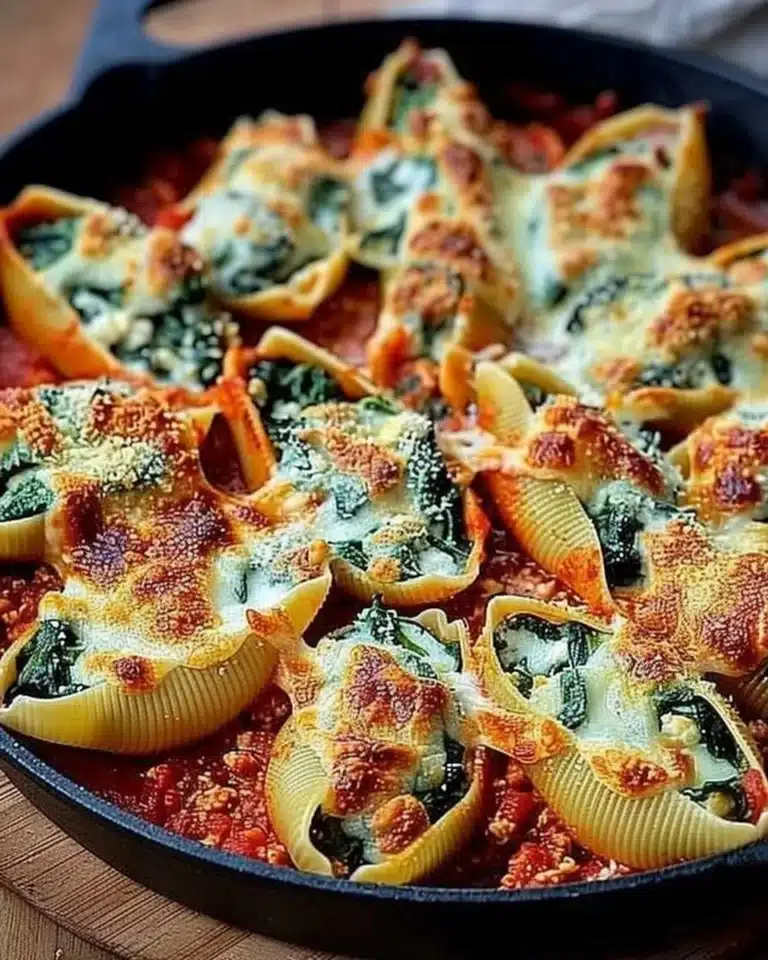Kolokithokeftedes (Greek Zucchini Fritters): A Complete Guide
Kolokithokeftedes, also known as Greek zucchini fritters, are one of the most beloved traditional dishes in Greek cuisine. Crispy on the outside, soft and aromatic on the inside, these savory delights capture the essence of a Mediterranean summer with every bite. Whether served as a meze (appetizer), a vegetarian main, or a side dish, Kolokithokeftedes are a favorite in homes and tavernas alike.
Table of Contents
This article explores everything from their cultural roots to a step-by-step recipe, plus expert tips to perfect your fritters at home.
What Are Kolokithokeftedes?
The word Kolokithokeftedes comes from two Greek words: kolokithi meaning zucchini, and keftedes, which traditionally means meatballs. Combined, they translate loosely to zucchini fritters or zucchini meatballs, although no meat is involved.
These fritters stand out thanks to their combination of shredded zucchini, crumbled feta cheese, and a medley of fresh herbs like mint, dill, and chives. They’re lightly fried and often served with tzatziki sauce or Greek yogurt for dipping. Their crispy crust and soft, creamy center make them an irresistible addition to any Greek spread.
A Glimpse Into Their Origin
Kolokithokeftedes are rooted in the traditional cuisine of Crete but are now enjoyed throughout Greece. They’re a popular offering at Greek tavernas and often appear on menus as part of a meze platter. In fact, it’s not uncommon for Greeks to judge a chef’s skill by the quality of their Kolokithokeftedes.
This dish aligns closely with the principles of the Mediterranean Diet, emphasizing fresh vegetables, olive oil, herbs, and minimal processing—making it not just delicious, but also nutritious.
The Essential Ingredients
One of the reasons Greek zucchini fritters are so popular is their simplicity. The basic ingredients include:
- Zucchini (shredded)
- Feta cheese (crumbled)
- Fresh herbs (dill, mint, chives)
- Red onion
- Eggs
- Flour (self-rising or all-purpose)
- Olive oil (for frying)
- Salt and pepper

The star ingredient, feta, is not just any cheese. The authentic Greek variety is recognized by the EU as a PDO (Protected Designation of Origin) product, meaning it can only be called “feta” if it’s made in specific regions of Greece using traditional methods.
Regional Variations
Although the core recipe is widely recognized, there are subtle differences based on location or personal preference. Variations include:
- Adding lemon zest or a splash of ouzo for extra aroma
- Using yellow squash instead of zucchini
- Omitting mint for a more neutral flavor
- Baking instead of frying for a healthier version
Pro Tips for the Perfect Fritter
To make truly great Kolokithokeftedes, technique is everything. Here’s how to get it right:
- Drain the zucchini well: After shredding, sprinkle it with salt and let it sit for 30 minutes. Then squeeze out as much moisture as possible using a cheesecloth or clean kitchen towel.
- Use high-heat oil: Olive oil works best when it’s hot but not smoking.
- Avoid crowding the pan: This lowers the oil temperature, making the fritters soggy.
- Use a cast iron skillet: It retains heat evenly, creating a consistent crisp.
Nutritional Snapshot
Kolokithokeftedes are surprisingly balanced. A serving offers:
- Calories: ~305 kcal
- Protein: 10g
- Fat: 16g (mostly healthy fats from olive oil and feta)
- Carbohydrates: 29g
- Fiber: 2g
They’re also a good source of Vitamin C, Potassium, and Calcium, making them both tasty and nourishing.
Common Mistakes to Avoid
Even experienced cooks can go wrong. Watch out for these:
- Not removing enough moisture from the zucchini
- Skipping fresh herbs, which provide essential flavor
- Using cold oil, which prevents proper frying
- Adding too much flour, making them doughy instead of crisp
Step-by-Step Recipe for Authentic Kolokithokeftedes
Here’s how to make a batch of about 15 fritters:
Ingredients:
- 4 medium zucchinis, shredded
- ½ red onion, finely chopped
- 3 tbsp fresh dill, chopped
- 2 tbsp fresh mint, chopped
- 2 tbsp chives or scallions
- 1 cup feta cheese, crumbled
- 1½ cup flour (preferably self-rising)
- 2 eggs, beaten
- Olive oil for frying
- Salt & pepper to taste
Instructions:
- Shred the zucchini and place it in a colander. Salt lightly and let it sit for 30 minutes.
- Squeeze out the excess moisture thoroughly.
- In a bowl, combine zucchini, onion, herbs, and feta.
- Add eggs and flour. Mix until you get a sticky batter.
- Heat olive oil in a skillet over medium-high heat.
- Drop spoonfuls of the mixture into the oil. Flatten slightly.
- Fry for 2–3 minutes per side or until golden brown.
- Transfer to paper towels to drain excess oil.
- Serve warm with tzatziki or plain Greek yogurt.
Serving Suggestions
Traditionally, Kolokithokeftedes are served as:
- An appetizer with tzatziki dip
- A vegetarian main with a side salad
- A side dish to grilled meats or seafood
They pair especially well with:
- Greek horiatiki salad
- Grilled chicken souvlaki
- Fresh pita bread
Storage and Reheating Tips
- Refrigerator: Store in an airtight container for up to 3 days.
- Freezer: Freeze on a tray, then transfer to bags. Lasts up to 3 months.
- Reheat in oven: 375°F (190°C) for 10–15 minutes to maintain crispiness.
- Avoid microwaving: It makes them soggy.
Gluten-Free or Vegan Alternatives
Want to adapt this dish to suit dietary needs? Here’s how:
- Gluten-free: Use chickpea flour or a gluten-free flour blend.
- Vegan: Replace feta with plant-based feta and use a flax egg (1 tbsp ground flaxseed + 2.5 tbsp water).
FAQs
Can I bake Kolokithokeftedes instead of frying them?
Yes! Brush a baking sheet with olive oil and bake at 400°F (200°C) for 20–25 minutes, flipping halfway.
How do I keep zucchini fritters from falling apart?
Drain the zucchini well and don’t skip the egg—it acts as a binder.
Can I use yellow squash instead of zucchini?
Yes, but the moisture content may vary. Adjust accordingly.
Are Kolokithokeftedes eaten hot or cold?
They’re best warm, but still tasty at room temperature.
What’s the best sauce to serve with them?
Tzatziki is the traditional choice, but Greek yogurt with lemon zest works beautifully too.
Final Thoughts
Whether you’re reminiscing about your last trip to Santorini or exploring Mediterranean flavors at home, Kolokithokeftedes offer a delicious, easy, and satisfying way to dive into Greek cuisine. Master the technique and this simple fritter might just become your go-to summer dish.
PrintKolokithokeftedes (Greek Zucchini Fritters): A Complete Guide
- Total Time: 45 mins
- Yield: 10–12 fritters 1x
- Diet: Vegetarian
Description
Crispy Greek-style zucchini fritters, flavored with fresh herbs and crumbled feta, pan-fried to golden perfection. Serve warm with a dollop of tzatziki or Greek yogurt for a delicious Mediterranean appetizer or light meal.
Ingredients
- 4 medium zucchinis, shredded
- ½ red onion, finely chopped
- 3 tbsp fresh dill, chopped
- 2 tbsp fresh mint, chopped
- 2 tbsp chives or scallions
- 1 cup feta cheese, crumbled
- 1½ cup flour (preferably self-rising, or all-purpose)
- 2 eggs, beaten
- Olive oil for frying
- Salt and pepper to taste
Instructions
- Shred the zucchini, sprinkle with salt, and let sit for 30 minutes.
- Squeeze out all the excess moisture using a kitchen towel or cheesecloth.
- In a large bowl, mix the zucchini with chopped onion, dill, mint, chives, and crumbled feta.
- Add the beaten eggs and flour. Mix until well combined and sticky.
- Heat olive oil in a skillet over medium-high heat.
- Scoop spoonfuls of the mixture into the pan and flatten slightly.
- Fry 2–3 minutes per side or until golden brown.
- Remove and drain on paper towels.
- Serve warm with tzatziki or Greek yogurt.
Notes
Be sure to squeeze the zucchini well to avoid soggy fritters. Use self-rising flour if available for fluffier texture. Great as a snack, appetizer, or light lunch.
- Prep Time: 30 mins
- Cook Time: 15 mins
- Category: Appetizer
- Method: Stovetop
- Cuisine: Greek
Nutrition
- Serving Size: 2 fritters
- Calories: 220
- Sugar: 3g
- Sodium: 400mg
- Fat: 14g
- Saturated Fat: 5g
- Unsaturated Fat: 7g
- Trans Fat: 0g
- Carbohydrates: 14g
- Fiber: 2g
- Protein: 7g
- Cholesterol: 60mg
Keywords: Greek zucchini fritters, kolokithokeftedes, Mediterranean, feta fritters, vegetarian appetizer






